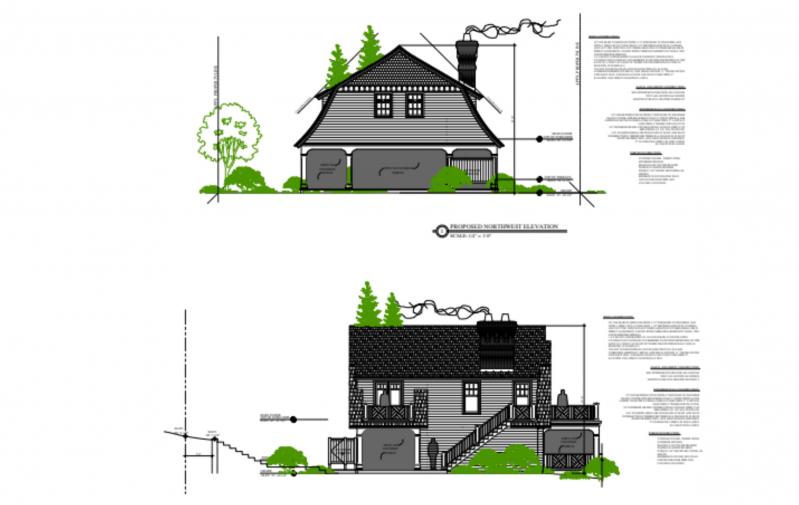Coming soon, squeezed between two resorts on the north side of Old Montauk Highway in Montauk, the smallest motel on the South Fork.
Normally here, people go big. Why would someone go small?
In this case, necessity — the motel will be a single unit.
“In my 20 years of doing this, this is one of the weirdest applications I’ve come across,” Tara Burke, a land planner representing James Howard, the owner of 697 Old Montauk Highway, told the East Hampton Town Planning Board last week.
“This definitely answers the question of what you do when you own a quasilandlocked parcel in a resort zone that is one-tenth the size of the minimum lot size,” remarked Ed Krug, a member of the board. “Who knew you could have a one-unit motel?”
Indeed, the zoning code does not even have a minimum size for a resort, so a one-unit motel fits the code. The nonconforming parcel in question, only .19 of an acre, pre-exists zoning, and — because all things about this application are strange — is surrounded on all sides by other parcels. The only way in to the lot is via a “floating” 20-foot side easement.
How that easement might work could be one of the most difficult aspects of the application. Because of the easement, the neighboring resort, Atlantic Bluffs Club, is going to have to share its driveway.
Assuming guests can pull in, they’ll find a two-bedroom, 997-square-foot, resort unit, called, on the application, the Howards. Out front will be a 375-square foot swimming pool and a pool terrace. On each side of the tiny motel, outdoor showers.
Ah, but can they pull out of the driveway?
Michael Hanson, a board member, commented that the very constrained, steeply sloped driveway might be difficult to navigate. “We have backup cameras now. It’s all good,” someone joked.
“It’s a humorous thought that it’s a floating access, but there are serious practical issues we have to deal with,” said Samuel Kramer, the planning board chairman. Chief among them: emergency vehicle access.
“We’ll have to talk to Atlantic Bluffs,” said Ms. Burke. “Our goal is to work with them. They have to allow us access. Our intent is to disrupt their current usage as little as possible.”
Setbacks, which in some cases are only five feet from lot lines as proposed, could have been another concern, although the planning board has the authority to waive setbacks in a commercial zone. In this case, since the property is surrounded by similar uses, no board member took issue with the setbacks.
“I see it as a premium unit of the existing two resort areas on either side,” said Louis Cortese, a board member, perhaps only half-kidding. “It’s really blending into what’s there already. As far as the residential area to the north, I think it’s far enough away and well buffered.”
Sharon McCobb, the board’s vice chair, noticed lots of steps and pathways and a retaining wall along the north property line. “There is a significant grade change in the rear,” Ms. Burke acknowledged. “It’s small, landlocked, and also rather steep.”
Because of the singular nature of the application, she continued, the applicant’s goal last week was simply to make sure it was viable. Because the planning board was clearly appreciative of the ingenious manner in which the tiny parcel will be used, it will go forward: Money will be spent to develop a grading, drainage, and lighting plan.
“It is utterly unique,” said Mr. Kramer.




